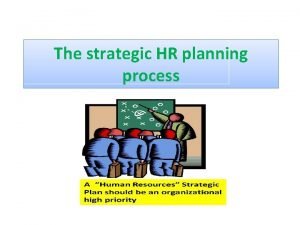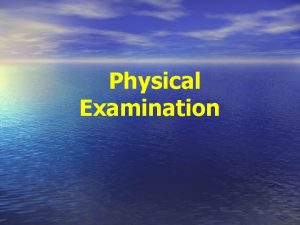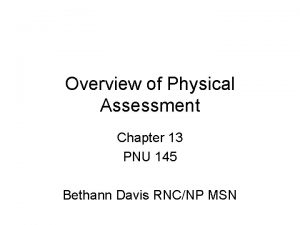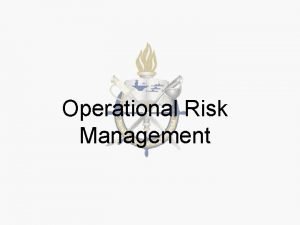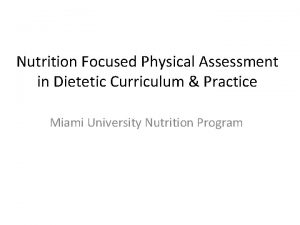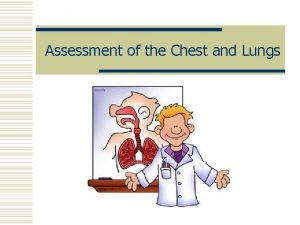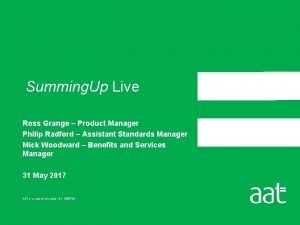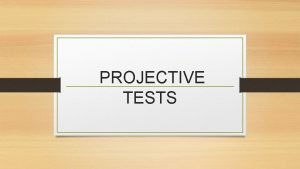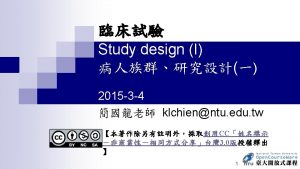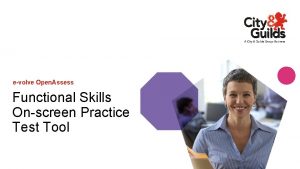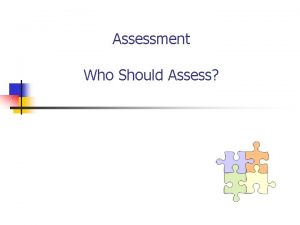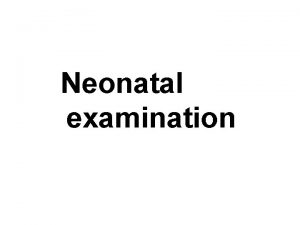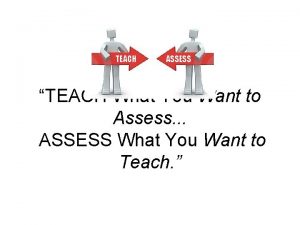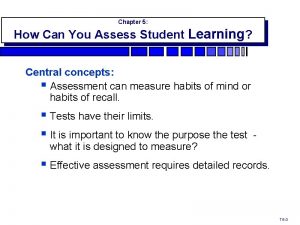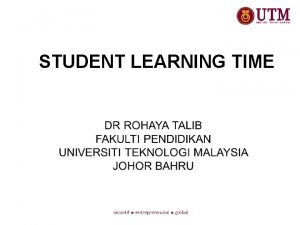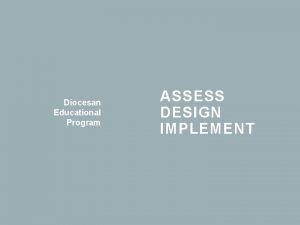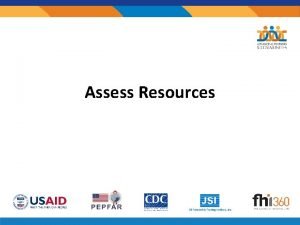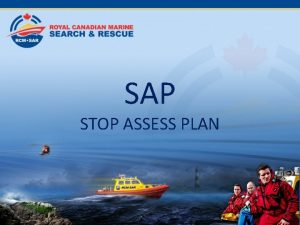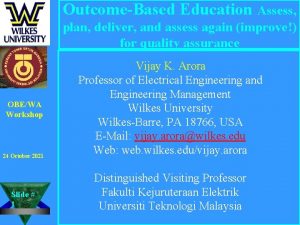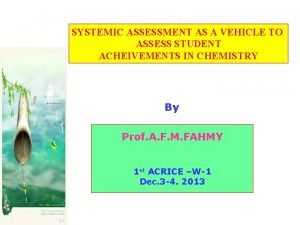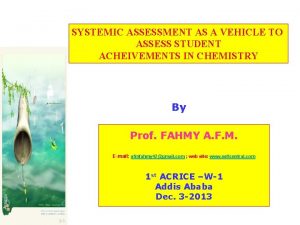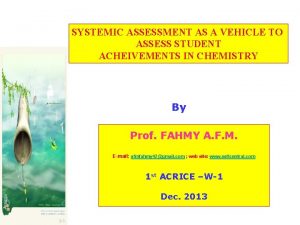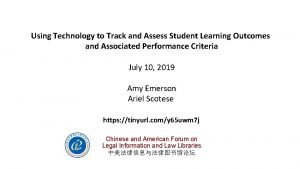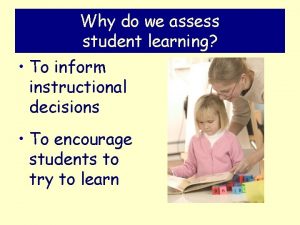Assessment How will you assess student learning Assessment

















- Slides: 17

Assessment How will you assess student learning?

Assessment O Assessments are tools to measure student learning. O Assessments must be: O Valid – accurate and appropriate O Reliable – will this tool provide the same results over time? O Usable – how difficult is this tool to administer?

Assessment O Assessments should align with what is taught, which are aligned with your curriculum goals & content standards O Develop the assessment before you teach the lessons – otherwise, you are “teaching to the test” O One strategy is to develop the assessment, then the learning activities & resources

Steps in “Backward Design” O 1. Define target (write learning objectives that address standards) O 2. Choose assessments O 3. Plan the activities – map them out on a calendar O 4. Organize resources; textbook, handouts, Power Points, video clips, etc.

Types of assessment O Diagnostic: occurs prior to instruction O Formative: informal; happens throughout the day, every school day; looks at students’ formation of knowledge, skills, concepts, etc. O Authentic/Performance: Resemble tasks that occur outside the classroom O Summative: summarizes student learning; closely tied to grades


Referencing O Norm-referencing = ranking O Criterion-referencing = minimal level of achievement O Self-referencing = by students; considers their own progress

Commonly used assessment tools include: O Rubrics O Exams O Quizzes O Oral Reports and essays

Readings Discussion Rubric Below (1 -2 pts) Exceptional (5) Average (3 -4 pts) Prepared for discussion (5) Not prepared for discussion; forgets copies of readings and personal notes; clearly has not completed all of the assigned readings Prepared for discussion with appropriate basic materials, but may be missing some of the required materials to have a successful discussion Prepared for discussion with all appropriate materials including marked passages and notes; ready to have a successful discussion Contribution to Discussion (5) Rarely contributes to discussion or Contributes to discussions contribution to discussion is off topic occasionally or when prompted; or seems to be made up contributions are related to the readings, but not fully developed Contributes to discussions often; contributions are related to the readings, shows understanding of pedagogy; helps to keep discussion going Staying on Task (5) Rarely listens or responds to group Sometimes listens and responds members; does not pay attention to appropriately, occasionally asks discussion; distracted by phone, i. Pad, questions or shares ideas or other device Listens and responds thoughtfully (reads marked passages, discusses terms and ideas, makes connections to other readings) Social skills (5) Makes no voluntary contribution or dominates discussion with off-topic commentary Listens to others’ comments but does not make eye contact with peers; interrupts others or fails to share talk time; does not contribute to a “flow” for discussion Keeps discussion moving; asks questions, builds on other's comments; names peers and refers to their comments; does not interrupt or dominate talk time Make connections (5) Fails to make connections between content in readings and real-world classroom situations Sometimes makes connections between content in readings and real-world classroom situations Frequently make connections between content in readings and real-world classroom situations; evidenced by giving specific examples from field experiences

Textbook tests? O Sometimes they are great; others, not so much. O Consider the test generators, they come as CD- ROM and you can choose which questions to use

Students will show their learning in different ways, so it is important to vary assessment O People have different types of intelligence O Choose assessments that promote critical thinking but also include lower levels of thinking. O Encourage self-assessment; students should keep track of their own progress O Differentiate wherever possible!


A good assessment should … O Provide info that tells students how well they have mastered the goals & standards O Inform teachers about their practices to help them improve their teaching O Reflect skills, materials, and content of the unit O Measure knowledge and skills O Reflect the interpretive nature of social studies

What are you trying to assess? O Social studies goal often ask students to “describe, locate, analyze, compare, trace, or evaluate. ” O Don’t let poor writing skills stand in the way of your assessment. O Provide multiple opportunities for students to show what they have learned.

No secret assessments – be positive O Students should know why & how they are being assessed. O Share a positive attitude – Tell students here is their chance to shine and showcase all the great stuff they have learned! O Present assessments as a celebration – find ways to post/showcase student work, encourage them to share ideas beyond the classroom, find realworld examples of successful students.

Authentic Assessment O Students construct inquiry and knowledge through disciplined inquiry that has value beyond the classroom. O Primary source analysis one example; students analyze several sources and prepare an oral presentation on taking a stand on an issue in history http: //beyondthebubble. stanford. edu/history-assessmentsthinking

J. L. G. Ferris, “The first Thanksgiving 1621. ” Created 1932. Library of Congress Prints & Photographs
 Student learning space login
Student learning space login How _________ your last weekend?
How _________ your last weekend? What did you do in london last weekend
What did you do in london last weekend Cuadro comparativo de e-learning
Cuadro comparativo de e-learning Tactile fremitus
Tactile fremitus Assess current hr capacity
Assess current hr capacity Tacticle fremitus
Tacticle fremitus How to assess alert and oriented
How to assess alert and oriented What are the levels of orm
What are the levels of orm Abbott nutrition focused physical assessment
Abbott nutrition focused physical assessment How to assess alert and oriented
How to assess alert and oriented Human resources in retail management process consists of
Human resources in retail management process consists of How to measure ap diameter of chest
How to measure ap diameter of chest Secureassess aat
Secureassess aat Sqa solar open access
Sqa solar open access Define projective test
Define projective test Permuted block randomization
Permuted block randomization City and guilds secure assess
City and guilds secure assess





